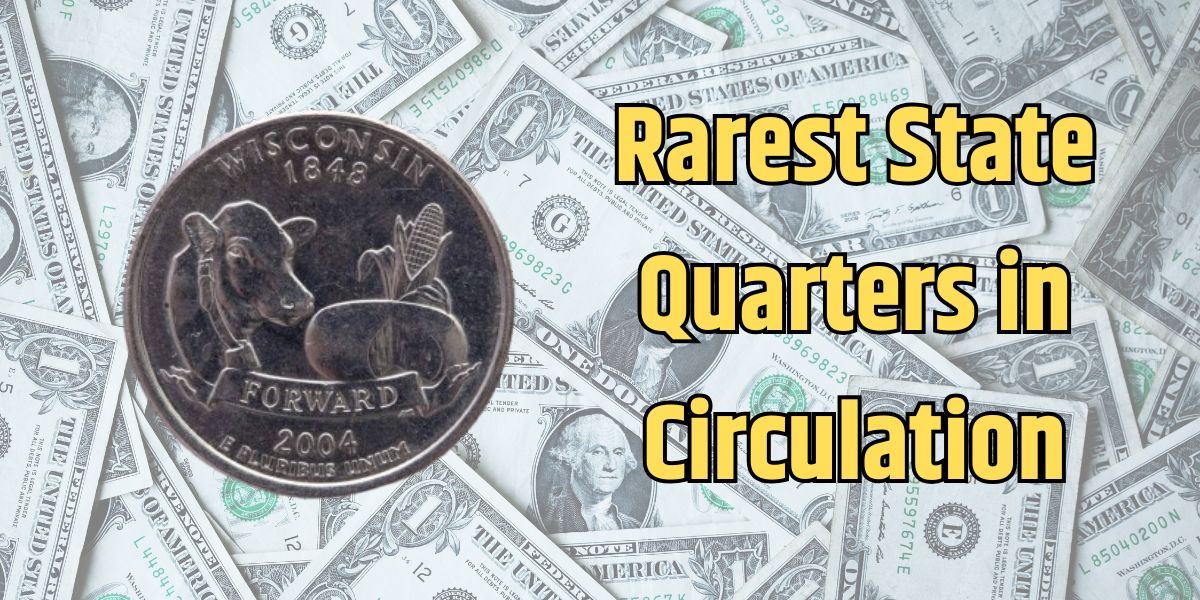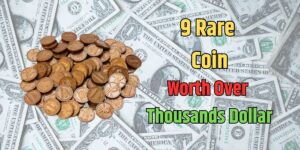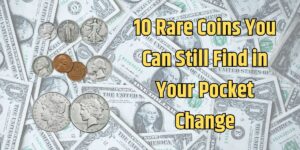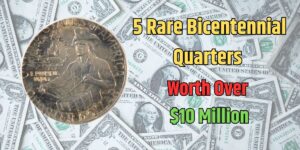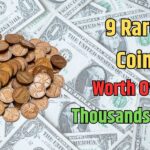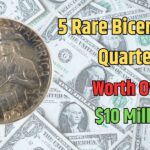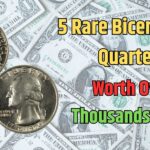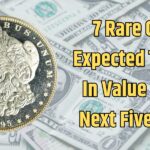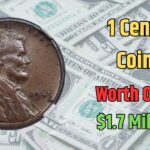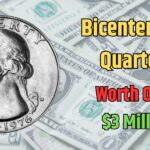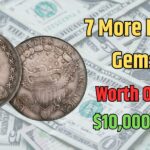The U.S. Mint’s State Quarter program, launched in 1999, introduced beautifully designed coins celebrating the heritage and identity of each state. While most of these quarters are still in circulation and valued at face value, certain coins with minting errors or limited production have become highly sought after by collectors. Below, we explore ten of the rarest state quarters, their unique characteristics, and their estimated values.
1. 1999 Delaware Quarter – “Spitting Horse” Error

The first quarter in the State Quarter series, the Delaware quarter, features an iconic reverse design of Caesar Rodney on horseback. Some coins display a die crack near the horse’s mouth, creating the appearance of the horse “spitting.”
- Estimated Value: Up to $5,000
- Identification Tip: Look closely at the area near the horse’s mouth for the crack that creates the “spitting” effect.
2. 1999 Pennsylvania Quarter – Double Die Reverse
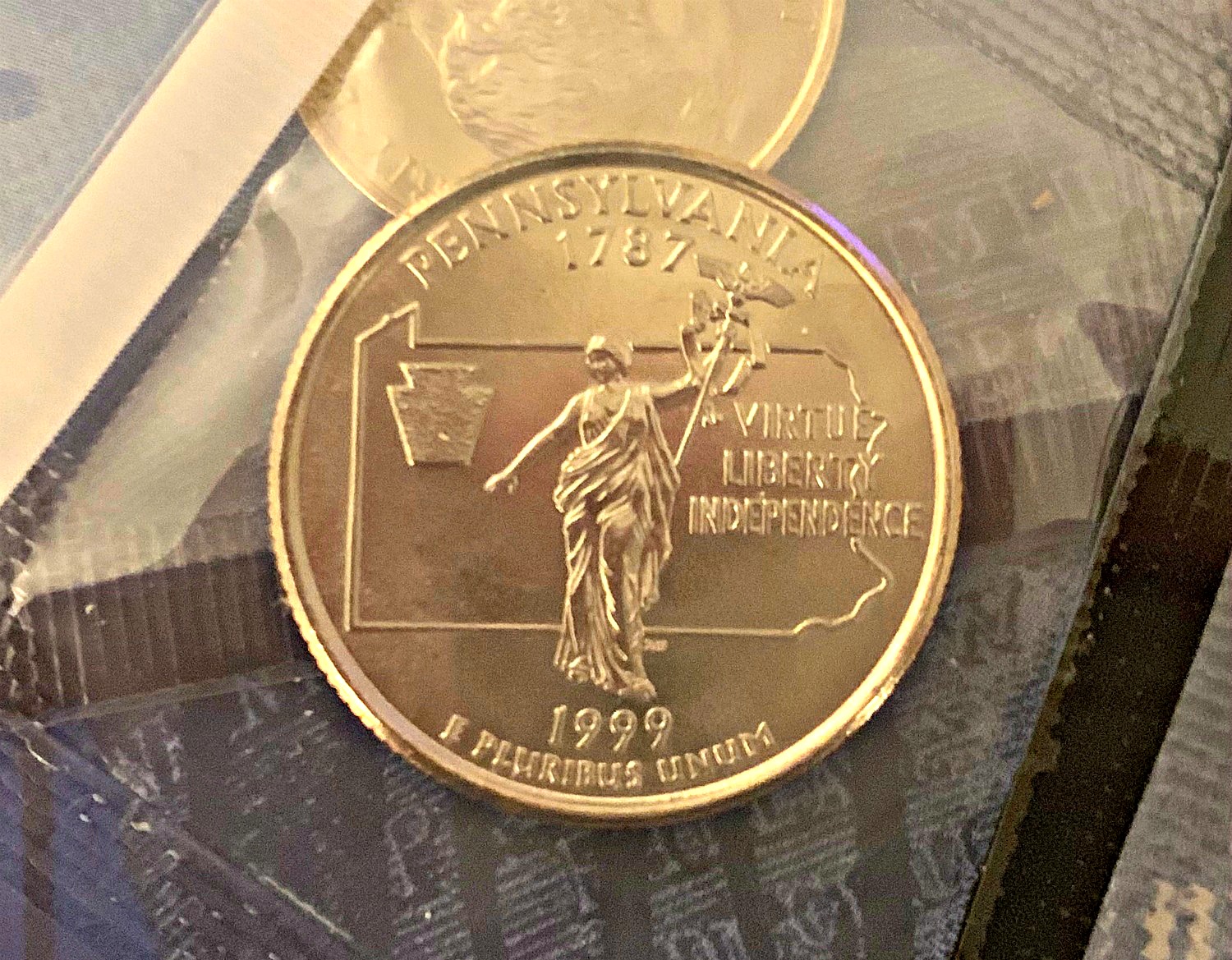
The Pennsylvania quarter’s “Double Die Reverse” error shows doubling in the letters on the coin’s reverse. This subtle misprint is highly valued by collectors.
- Estimated Value: Up to $1,000
- Identification Tip: Use a magnifying glass to check the reverse side for doubled letters, especially in inscriptions like “Pennsylvania.”
3. 2000 New Hampshire Quarter – “Hanging Old Man” Error

On the New Hampshire quarter, a die crack creates the illusion of a noose around the “Old Man of the Mountain” rock formation depicted on the reverse. Known as the “Hanging Old Man” error, it’s a fascinating minting mistake.
- Estimated Value: Up to $500
- Identification Tip: Look for the die crack near the “Old Man of the Mountain” formation on the reverse.
4. 2000 South Carolina Quarter – Doubling on “South”

This quarter’s error involves doubling in the word “South” on the reverse side. Though subtle, this defect significantly enhances the coin’s appeal to collectors.
- Estimated Value: Up to $250
- Identification Tip: Check for doubling in the lettering of the word “South” with a magnifying glass.
5. 2001 Kentucky Quarter – Horse Doubling Error

The Kentucky quarter depicts a horse in front of Federal Hill, but some coins feature a doubling error in the horse’s mane.
- Estimated Value: Up to $300
- Identification Tip: Inspect the horse’s mane on the reverse for signs of doubling.
6. 2004 Wisconsin Quarter – Extra Leaf Error
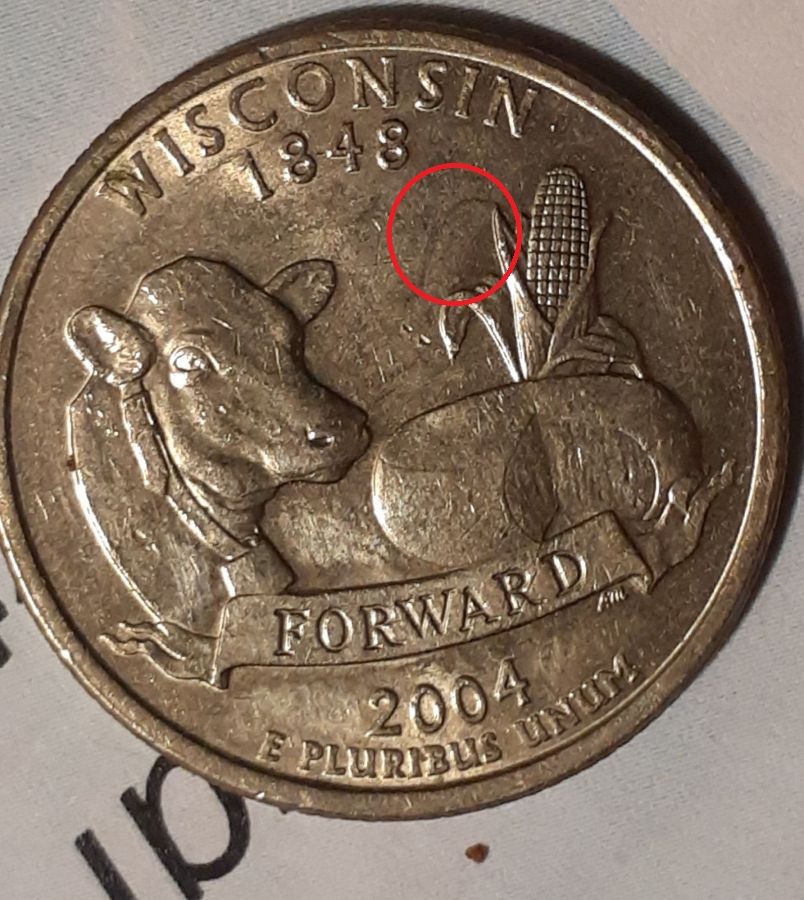
One of the most famous errors in the series, the 2004 Wisconsin quarter includes an “extra leaf” near the corn stalk. This error comes in two varieties: “extra high leaf” and “extra low leaf.”
- Estimated Value: Up to $1,500
- Identification Tip: Look closely at the corn stalk on the reverse to identify the extra leaf.
7. 2005 Minnesota Quarter – Double Die Error
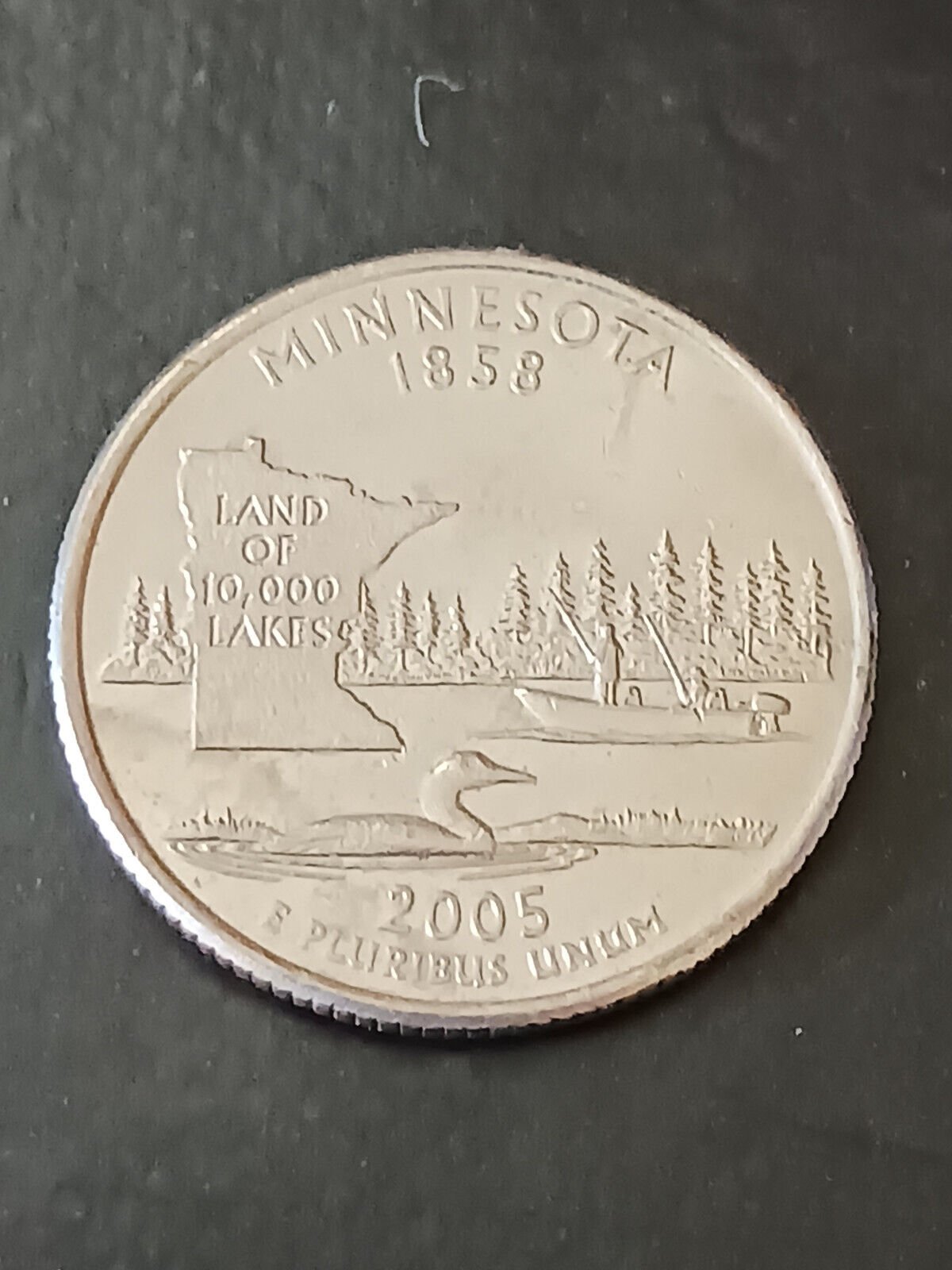
The Minnesota quarter features a “Double Die” error in the background trees, with some coins showing multiple tree trunks doubled.
- Estimated Value: Up to $300
- Identification Tip: Use magnification to examine the trees in the background for signs of doubling.
8. 2006 Colorado Quarter – Cud Error

A “Cud Error” appears on some Colorado quarters as a die crack along the mountain design on the reverse. This raised area resembles an extra piece of the mountain.
- Estimated Value: Up to $250
- Identification Tip: Inspect the mountains on the reverse for any unusual raised areas or cracks.
9. 2008 Hawaii Quarter – Double Die Error

The 2008 Hawaii quarter has a “Double Die Error” in the word “Hawaii” on the reverse, making it a standout find for collectors.
- Estimated Value: Up to $500
- Identification Tip: Check the word “Hawaii” on the reverse for signs of doubling.
10. 2009 District of Columbia Quarter – Ellington Misspelling
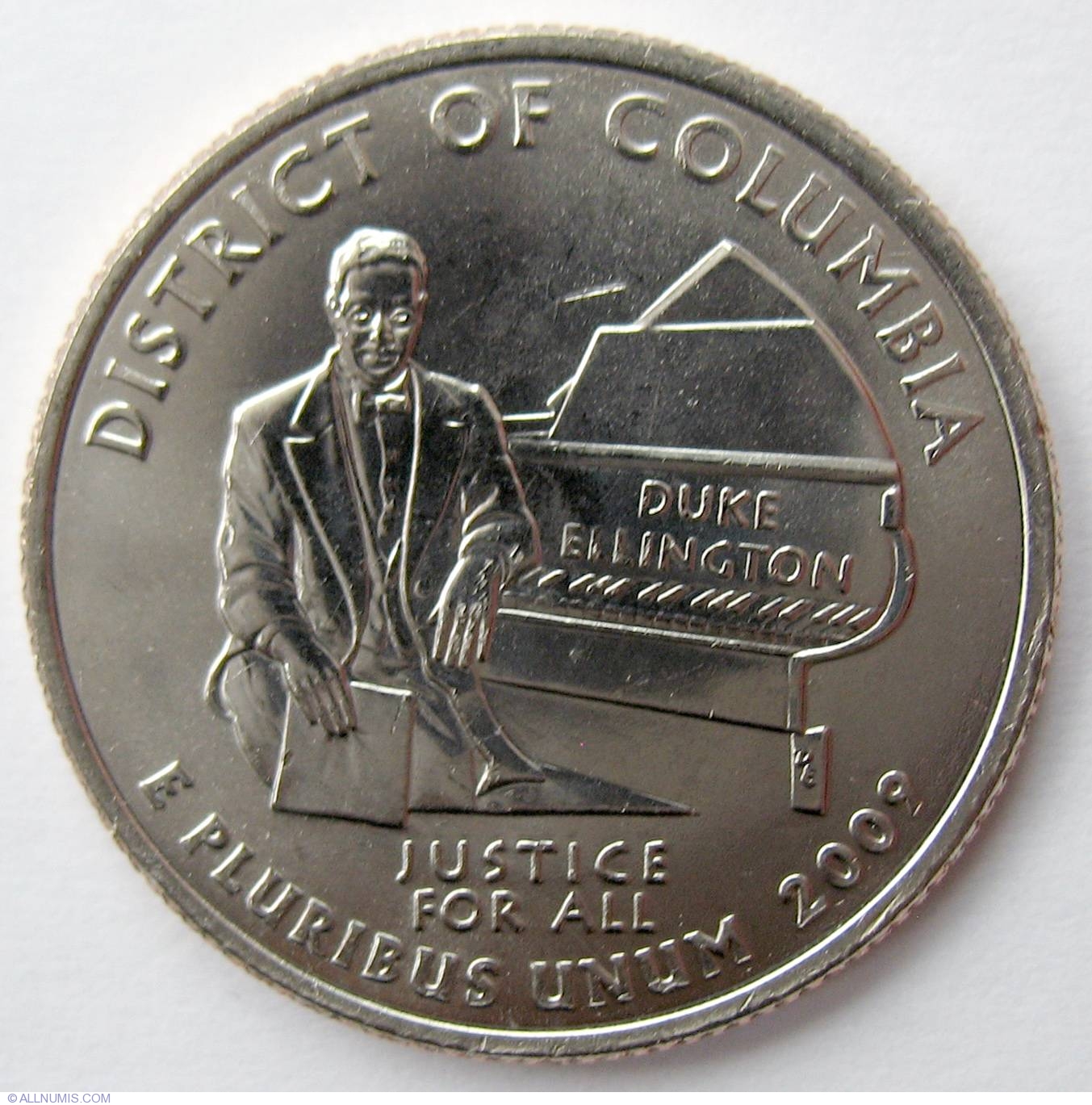
Featuring jazz legend Duke Ellington, some District of Columbia quarters have a misspelling of “Ellington.” This error, known as the “Ellington Error,” has made the coin highly collectible.
- Estimated Value: Up to $1,000
- Identification Tip: Inspect the spelling of “Ellington” on the reverse for any inconsistencies.
Summary of Rare State Quarters
| Quarter | Error Type | Estimated Value | Year of Release |
|---|---|---|---|
| 1999 Delaware | Spitting Horse | Up to $5,000 | 1999 |
| 1999 Pennsylvania | Double Die Reverse | Up to $1,000 | 1999 |
| 2000 New Hampshire | Hanging Old Man | Up to $500 | 2000 |
| 2000 South Carolina | Doubling on “South” | Up to $250 | 2000 |
| 2001 Kentucky | Horse Doubling Error | Up to $300 | 2001 |
| 2004 Wisconsin | Extra Leaf Error | Up to $1,500 | 2004 |
| 2005 Minnesota | Double Die Error | Up to $300 | 2005 |
| 2006 Colorado | Cud Error | Up to $250 | 2006 |
| 2008 Hawaii | Double Die Error | Up to $500 | 2008 |
| 2009 District of Columbia | Ellington Misspelling | Up to $1,000 | 2009 |
Tips for Finding Rare State Quarters
- Check Your Change: Many rare quarters still circulate, so inspect your change closely.
- Use a Magnifying Glass: Errors like doubling or die cracks are often subtle and require magnification to spot.
- Attend Coin Shows: Coin shows are excellent opportunities to learn from experts and possibly acquire rare quarters.
- Consult References: Online guides and coin collector forums are valuable resources for identifying errors.
Examining state quarters for rare errors offers a fun and potentially rewarding way to engage with numismatics. These error coins, treasured for their rarity and distinctive features, allow collectors to own a piece of minting history.
FAQs
Are all state quarters valuable?
Most state quarters are only worth their face value, but rare error coins or limited varieties can be worth hundreds or even thousands of dollars.
How can I identify a rare state quarter?
Look for unique features like doubling, die cracks, or extra details on the coin. A magnifying glass can help reveal subtle errors.
Can I find rare state quarters in circulation?
Yes, rare quarters are occasionally found in pocket change, although it requires patience and diligence.
Where can I sell rare state quarters?
Rare quarters can be sold at coin shops, auctions, or through online platforms like eBay. Have the coin appraised to ensure you get a fair price.
Do error quarters increase in value over time?
Many error quarters appreciate in value due to their rarity and demand, but market trends can influence prices.
